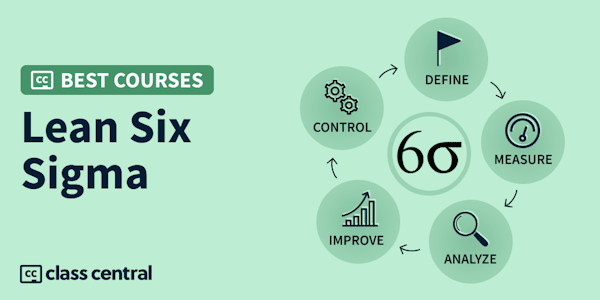The course is designed for Lean Six Sigma professionals to excel in the American Society for Quality (ASQ) Certified Six Sigma Green Belt (CSSGB) exam. The course focuses specifically on the first two phases of the define, measure, analyze, improve, and control (DMAIC) framework. In the define phase, you will learn to define a problem statement and project scope, whereas in the measure phase, you will learn about effective data collection strategies and measurement system analysis (MSA).
By the end of this course, you will be able to:
- Define specific, measurable, achievable, relevant, and time-bound (SMART) project goals and objectives.
- Analyze the voice of the customer (VOC) data to translate it to critical to quality (CTQ) parameters.
- Explain process mapping and define key performance metrics.
- Plan data collection activities to quantify the performance of the process.
The course is best suited for individuals who analyze and solve quality problems and work on quality improvement projects. It is recommended that you complete the first course in the ASQ-Certified Six Sigma Green Belt Exam Prep Specialization, Overview: Six Sigma and the Organization, before starting this course.
Overview
Syllabus
- Define: Project Identification, Voice of the Customer (VoC), and Project Management Basics
- In this module, you will learn the essential foundations for project initiation. The focus is on project identification, understanding the voice of the customer (VoC), and grasping fundamental project management principles. You’ll discover how to select projects effectively, comprehend customer needs through the VoC, and the basics of project management. You’ll also learn about project selection processes, process components, benchmarking concepts, and stakeholder analysis. The module also delves into VoC data collection, how to translate it into critical to quality (CTQ) factors, applying the KANO model, crafting project charters, defining project scopes, and tracking key project metrics. Finally, this module is your gateway to understanding project commencement and customer-centric project initiation.
- Define: Project Management and Planning Tools
- In this module, you will learn about the fundamental tools crucial for effective project planning. You will gain insight into the work breakdown structure (WBS), Gantt charts, critical path method (CPM), and program evaluation and review technique (PERT. Additionally, the module discusses project documentation essentials, elements of project risk analysis, management and planning tools, and strengths, weaknesses, opportunities, and threats (SWOT) analysis. You will also learn about the benefits of decision matrices, quality metrics such as DPU, DPO, DPMO, Sigma level, and cost of poor quality. Finally, the module explores stages of team evolution, role management, and decision-making aids and offers a comprehensive insight into essential techniques vital for successful project management and planning.
- Measure: Probability and Statistics and Collecting and Summarizing Data
- In this module, you will focus on important statistical concepts and data-gathering techniques. You will learn about process analysis, probability basics, and various statistical distributions like normal, binomial, and Poisson. You will also gain insight into different data types, planning data collection, sampling methods, and operational definition worksheets. Next, the module delves into measures of central tendency and dispersion, and graphical representation. You will be introduced to statistical ideas such as probability, diverse data types, and effective data collection strategies, empowering you to summarize, analyze, and interpret data confidently in project scenarios.
- Measure: Measurement System Analysis (MSA)
- In this module, you will gain insight into measurement system analysis (MSA), which is an in-depth evaluation of a measurement process to assess the quality and reliability of measurement systems used in data collection. You will also learn to evaluate and improve the existing measurement systems in a process or organization, identify sources of measurement error, assess measurement system performance, and implement strategies to enhance measurement accuracy and precision. Finally, this module also focuses on evaluating and assessing the performance and capability of a process to meet customer requirements and specifications.
- Peer-Reviewed Assignment
- This is a peer-review assignment based on the concepts taught in The DMAIC Framework: Define and Measure Phase course. In this assignment, you will be able to explain how to apply the define and measure phases of the DMAIC framework in a real-life scenario.
Taught by
Jaswant Singh Verma, Skill-Up EdTech Team and Madhumita Pati




